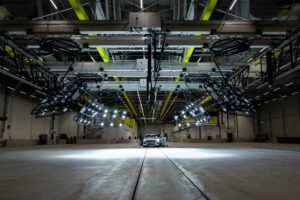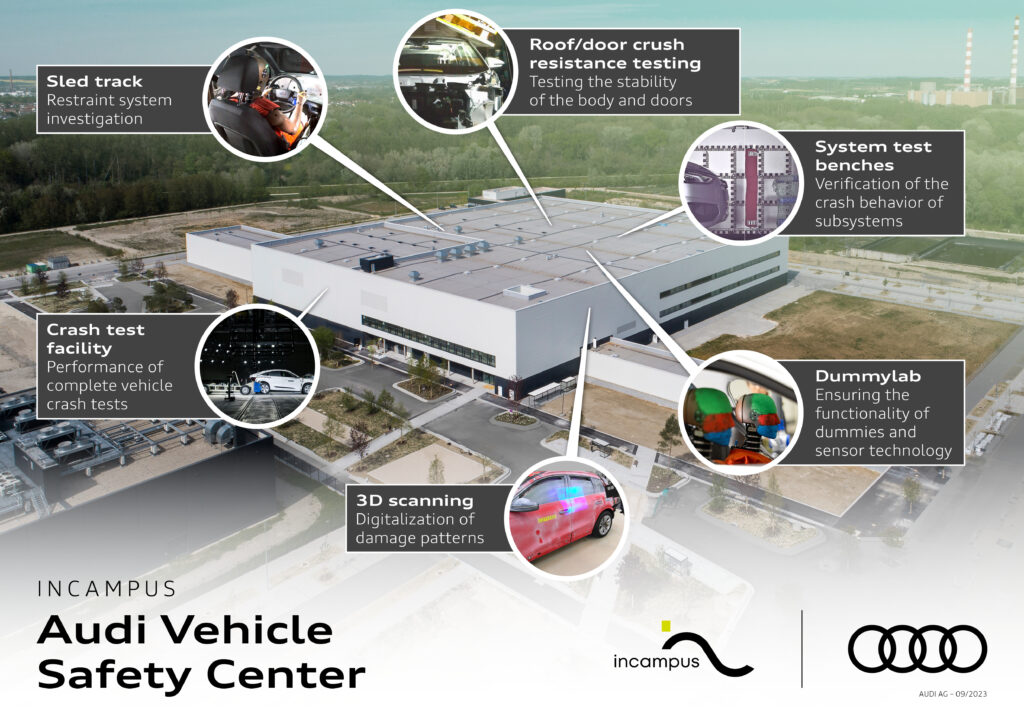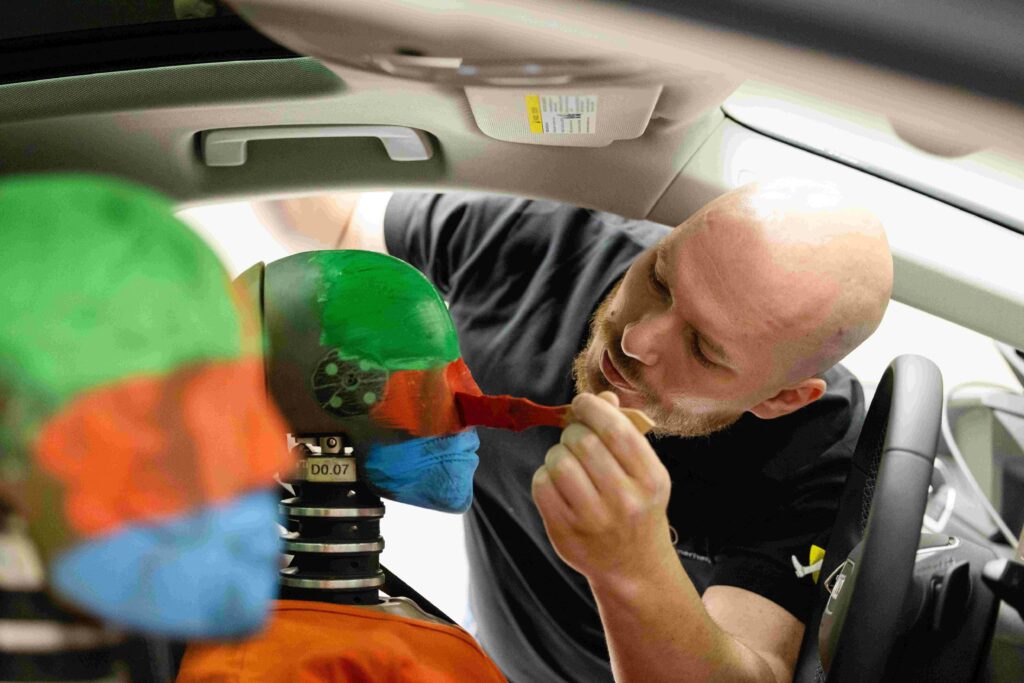
Audi opens new safety center with ‘state-of-the-art’ crash test facilities
By onAnnouncements
Audi has opened a new vehicle safety center in Germany that it says will be its “most important development facility” in passive safety.
The Audi Vehicle Safety Center, which stands on its technical campus and cost $100 million to build, is capable of performing tests that currently exceed safety requirements in many of the OEM’s markets, the automaker said when announcing its new facility. Features of the center, which took three years to build, include:
-
- A 250-meter run-up track;
- A mobilie 100-ton crash block; and
- The ability to collide two vehicles at a 90-degree angle.
Audi said its crash block can be moved and rotated throughout its crash arena with several lanes so that it can perform different types of tests and research on collisions involving two vehicles.
The space configuration also allows vehicles, which undergo numerous test scenarios before being launched, to be driven sideways against obstacles.
“Belt systems and airbags are being developed even more efficiently thanks to a novel coasting slide with a delay unit,” Audi said in a press release. “State-of-the-art high-speed cameras and energy-efficient LED lighting systems facilitate the team’s work in the Audi Vehicle Safety Center. A dummy lab, component test stands, workshops, and offices complete the building.”
The facility also includes areas focused on investigating restraint systems, testing the stability of bodies and doors, and verifying the crash behavior of subsystems. Its 3D scanning wing digitalizes damage patterns.

The facility was designed to be agile enough to meet new technological requirements as regulations become more stringent in numerous global markets, the OEM said.
“Safety is a top priority at Audi. Our new vehicle safety center is impressive proof of this commitment,” said Oliver Hoffmann, member of the Audi Board of Management for Technical Development. “Today’s Audi models achieve outstanding results in globally valid test procedures. But we’re not resting on our laurels. Instead, we’re continuing to improve our development and testing capabilities.”
The facility will employ about 100 people and includes more than 60 crash test dummies of various sizes that will be used in Audi’s simulations and tests.
The OEM detailed how its dummies use up to 150 sensors to collect relevant data, including larger sensors used to provide physical readings. It said its high-speed cameras and motion tracking are used to determine the sequence of events during crash tests.

Two crash-test dummies are pictured being prepared for a crash test at Audi’s new safety center.
Another component of its safety lab will be 3D scans used to process post-test deformations digitally and fed into a backend system.
“These days, practically all accidents can be simulated, whether they involve pedestrians or head-on and side-on collisions,” the OEM said. “Every month, the specialists at Audi perform tens of thousands of crash simulations well before the first prototype is even built. For the crash design of the body of a single current model alone, more than 60,000 calculations are made for up to 100 different load cases.”
Audi’s new safety center is one of two that recently opened.
Last week, Hyundai opened its $51 million Safety Test and Investigation Laboratory in Michigan, which it said will help enhance the safety of its vehicles.
The OEM’s new facility, touted as the first of its kind in North America, was designed to help Hyundai identify and replicate field issues, expedite investigations, and conduct regular safety testing.
Hyundai agreed to build the lab to comply with a 2020 National Highway Traffic Safety Administration (NHTSA) consent order.
It did so after NHTSA determined that Hyundai and Kia had moved too slowly in recalling more than 1.6 million vehicles equipped with engines that were prone to seizing. NHTSA also faulted Hyundai for inaccurately reporting certain information about the recalls to the agency.
The order required Hyundai to “build and develop a fully functioning United States-based outdoor test laboratory and vehicle tear down facilities. The test laboratory will focus on safety field issues, vehicle inspections, and defect investigations.”
Images
All images courtesy of Audi
